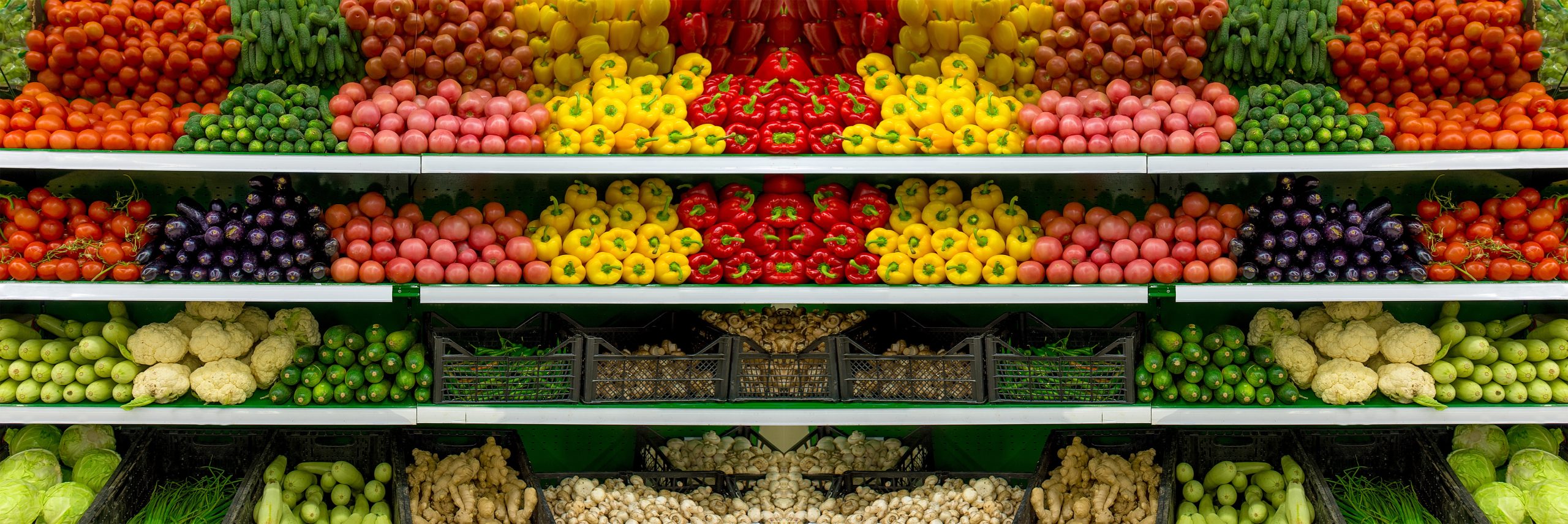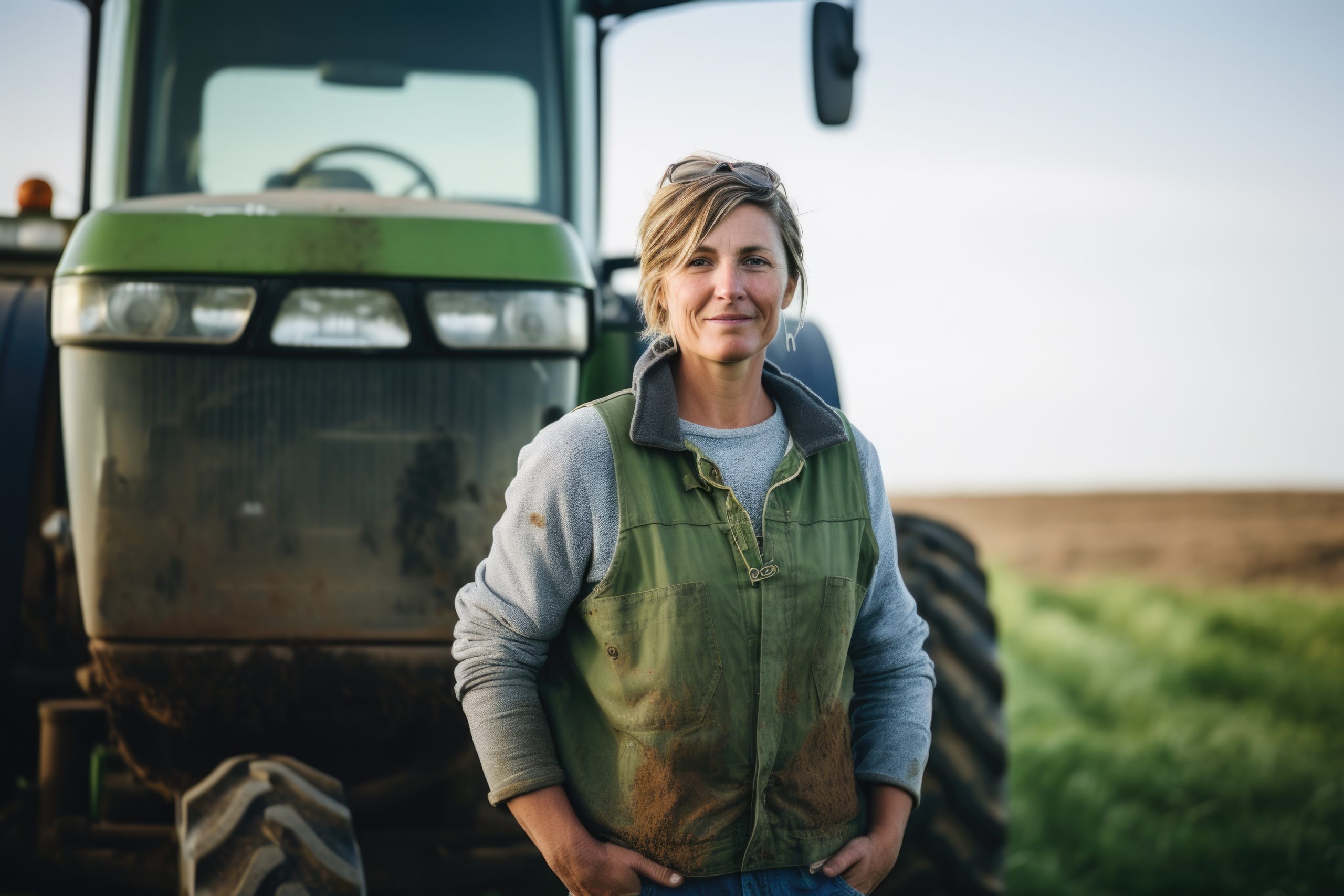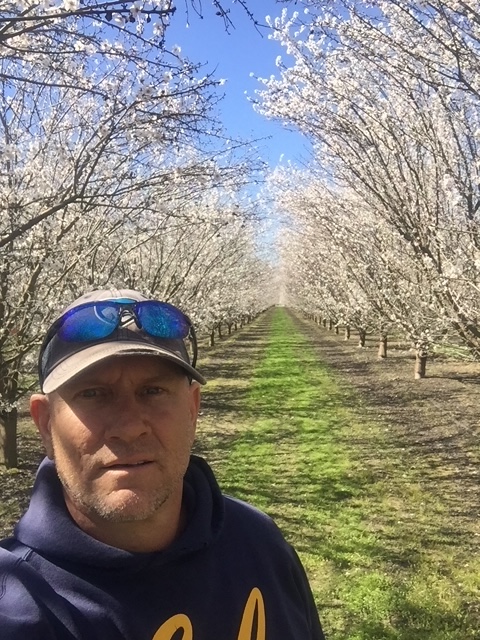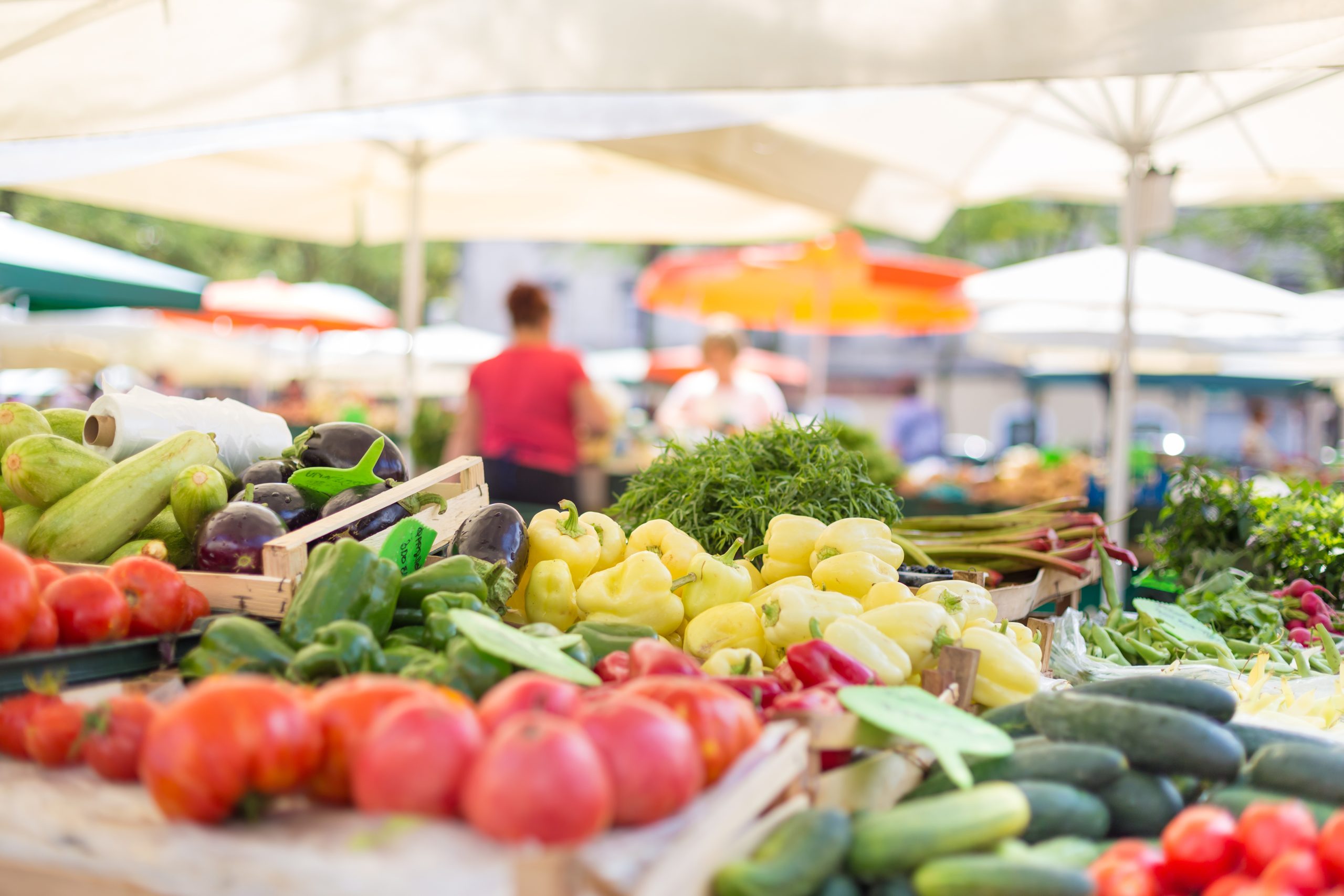1 Farm-to-Table and All the in Between
Kayla Smock

Walking into a local grocery store, we are often met with displays of produce. Various types of apples and berries, heads and heads of lettuce, carrots, broccoli, bananas, peppers, cauliflower; any type of produce is available at our fingertips. We often pick up our weekly oranges without even thinking about where they must have come from. In the Midwest, the desolate winter is certainly not producing our fresh tomatoes or ripe strawberries. If one takes a second to look around the grocery store, one might start to wonder where all this produce comes from. The modern farming and consumption habits of consumers have completely revolutionized the way we get our food. The food chain has completely changed – what was once farm-to-table has turned into a five-step process that covers thousands of miles.
While it may seem great to have easy access to produce year-round, there is a large price we pay to have this including increased costs of produce, decreased quality of produce, and increased food waste which is why it is important for consumers to be critical and consider exactly what it is they are purchasing.
From Farm to Table

Produce goes through quite the process to reach our plates. It is first grown on a farm; the farmer plants the seeds, tends to the plants, and then harvests the produce. Then, it is transported to a processor. Since farmers produce food at such large quantities today, processors are necessary to sort out the produce that does not meet quality standards and package the produce to be shipped to its next destination. On a typical industrial farm, the produce is stored in warehouses before it is loaded onto trucks and sent to the processor (Mejerhag).
At the processor, fruits and vegetables are prepared for their long transports. Harvesting the produce while it is still unripe is a common practice used by farmers today to get their produce to the consumers at peak ripeness. They harvest early and then use a gas to ripen them throughout the transport (Mejerhag). Produce is often dipped in a food grade wax to help with preservation. While it is a food grade wax and is not harmful to humans, it does change the quality of the produce available to us. In fact, even organic produce is often dipped in a beeswax to help keep it fresh during the transportation between the farm to the consumer (Metzler, personal communication, November 17, 2023). As the food leaves the processors, it is loaded onto trucks to the distributors.
Distributors are retailers or wholesalers, whom other retailers buy or get their food from. They are responsible for the distribution of food. This food may be distributed to grocery stores nearby or put on a ship to go across seas. Large chains such as Kroger and Walmart each have their own distributors that are responsible for getting the produce to their individual stores. They are essentially the middleman in the food chain (Mejerhag).
From the distributor, the produce makes its way to the retailers. This is where most people purchase their produce. Food comes in on trucks, and it is placed on shelves for consumers to purchase the produce they want. At a typical grocery store, there are often just about any options a person could possibly want. If one goes in to buy carrots, they often have options ranging from whole carrots, baby carrots, sliced carrots, and the organic version of each of those. Variety is certainly accessible in the typical American grocery store. Consumers then take this produce home to eat, or, if people are honest, sometimes rot away in their refrigerator. Each step of this process adds time and decreases the quality of the produce consumers have available to them.
The Effects on Produce
This process of getting produce from the farm to the consumer is quite long which has major side effects on the food. On average, the trip from farm to the consumer takes about one month. For example, think about a typical peach bought in a grocery store. That peach might be picked on July 1st, three to five days before it is ripe, and then it is transported to cold storage arriving on July 3rd. After going through processing, the fruit will be sold by the 15th of July, placed on a truck, and arrive to the distributor by July 18th. Most produce would get to the grocery store by the 21st, be available to the consumer by the 22nd, and remain on the shelf about a week before being purchased. Rarely is produce eaten as soon as it gets home which means most produce must last around a month from being picked to the point it is eaten (Metzler, personal communication, November 17, 2023). Between all the locations and truck rides, the average produce travels around 1,500 miles to go from farm to table (Leake, 2010). Between all the locations and truck rides, the average produce travels around 1,500 miles to go from farm to table (Leake, 2010). While year-round access to fresh produce seems great, this produce is no longer capable of being the quality that it once had the potential to be. A common practice of fruit farming is to pick fruit before it is ripe. This is done to ensure that the produce is fresh when it reaches the consumer. Fruit, however, stops producing sugars when it is picked. This means that the fruit is going to be less sweet and simply not taste nearly as good (Metzler, personal communication, November 17, 2023). Because of the high demands of consumers, the quality of the produce now available in the grocery store has been severely decreased.
Wasteful Habits
This year-round access to produce also plays a role in the major waste habits of Americans. According to the United States Department of Agriculture, somewhere between 30% to 40% of total food is wasted by Americans (USDA). According to the United States Department of Agriculture, somewhere between 30% to 40% of total food is wasted by Americans (USDA). In fact, a study done by the United Nations Economic Commission reported that 20% of produce is wasted before it even reaches retailers simply because of cosmetic issues (UNECE). Society has set a standard for their produce, especially when it comes to what it looks like, and because of this standard, farmers are forced to provide a certain product to the processors and distributors. By consumers expecting all produce to look perfect and uniform, they are pushing farmers into a corner that increases waste and decreases the quality of produce accessible to consumers. Another large contribution to food waste is the long process that has been formed to get food to its’ final destination.

Ryan Metzler, a fourth-generation organic farmer fromCalifornia, explained the ways that constant access has changed the quality of produce available to consumers. The quality standards of produce have been set incredibly high which causes the cost of food to be raised much higher than it could be if it was just transported from the farmer to the consumer. The increased costs is due to the multi-step process described earlier. For example, Metzler shared that in Northern California, his farm is in a popular farming area. Common sense would say those people living in the surrounding communities often get much more fresh produce because it could leave the local farm and go straight to the grocery store. This is often not possible for smaller farms though. For example, to sell produce straight to Whole Foods, a farmer must carry an insurance policy that costs around $5 million. That cost is simply not feasible for most farmers, especially those in organic farming which is much more niche. So instead of going straight to the consumer, produce is still picked days earlier than peak ripeness, sent to the processor, and then sent back on a truck to the local grocery store. The long process adds miles to the produce, decreases quality of the produce, and adds cost. This cost is ultimately seen in lower revenues for the farmer and higher prices for the consumers (Metzler, personal communication, November 17, 2023).
Is organic really better?
Being a critical consumer is an important part of understanding the produce one purchases. Organic produce is often portrayed as a better alternative to conventional produce, but there are multiple layers to understanding the full picture. Organic does not mean that seeds are planted, left to grow, and then farmers just come back to harvest the produce. It may seem that organic farmers just let nature completely take over, but in reality, organic farmers still use pesticides and other tools that help their produce to grow the best. The difference is that the pesticides used by organic farmers are made from naturally occurring substances. Organic simply means that the food was grown without the use of synthetic chemicals and/or genetically modified components (Better Health, 2022). Organic simply means that the food was grown without the use of synthetic chemicals and/or genetically modified components (Better Health, 2022). There are many benefits to organic farming for the consumer and environment which is not to be discredited, but it is important to know what exactly organic means when purchasing that produce.
Produce from Outside the United States
As a consumer, one should probably be asking themselves, should we be purchasing produce that is not in season near us? A great example to look at is the strawberry industry. Produce is often labeled with the same labels year-round, but when that produce goes out of season, it is often replaced with produce grown internationally. The label will change minorly to say “grown in Mexico” or something to that extent, but overall, to the quick shopper’s eye, they will look like the exact same strawberries. From 2004 to 2014, the Mexican exportation of strawberries to the United States increased fourfold from 93 million to 355 million dollars (Wu et al., 2018). As a whole, 40% of the fruit consumed by Americans is grown internationally (Kennedy). As a whole, 40% of the fruit consumed by Americans is grown internationally (Kennedy). While it may seem nice to have strawberries year-round, it is important to think about the differences in food quality and safety standards. Mexico will never have the same quality standards as the United States. As a society, are we willing to risk quality and safety of our food simply for access?
Creating Change
While there may not be a foolproof solution to the produce industry, there are a few things consumers can do to help change the trajectory. Critical consumerism is always important; whether one is buying clothes or food or furniture, one should always understand what it is they are buying. Specifically, regarding food, Ryan Metzler encourages consumers to demand better. The grocery store, distributors, processors, even farmers, cannot make money if consumers do not buy.

As a consumer, there is a responsibility to demand what one wants. Encouraging grocery stores to sell the utility grade produce – the ones completely edible with a few cosmetic flaws – at a lower cost to lower waste is a great place to start. Demanding better tasting and fresher produce to help eliminate some of the middleman costs is another helpful idea. One action step could be not purchasing produce that is out of season; this may help show large chain grocery stores that quality is more important than constant access to us consumers. Perhaps one of the best ways to change our consumption habits is to consume locally when we can. When tomatoes, berries, and lettuce are in season, buy it from a local farm. Not only does this support one’s local economy, but it also increases the ability for local farmers to grow and people to buy more locally grown goods. Maybe check out your local farmers market next Saturday! Look into seeing if there is a local co-op close by. We all love our fresh peaches and apples, but perhaps we do not realize the quality we are missing out on because of our constant demands. Everyone can do a small part in changing the produce industry.
References
Better Health Channel. Organic food. Better Health Victoria. https://www.betterhealth.vic.gov.au/health/healthyliving/organic-food.
Ethical Foods. Sprayed Produce: The Journey from Harvest to Table. https://ethicalfoods.com/sprayed-produce-harvest/.
Go Nature Market. The Complete Journey of Food from Farm to Plate. https://en.gonaturemarket.com/the-complete-journey-of-food-from-farm-to-plate/.
Leake, L. (2021, December 1). How far does your produce travel?. 100 Days of Real Food. https://www.100daysofrealfood.com/how-far-does-your-produce-travel/.
Metzler, R. (2023, November 17). Personal interview.
Organic Boosting. The Journey of Organic Fruits & Vegetables from Farm to Table. https://organicboosting.bio/en/the-journey-of-organic-fruits-vegetables-from-farm-to-table/.
Reboot with Joe. From Farm to Plate: The Journey of Your Produce. https://www.rebootwithjoe.com/from-farm-to-plate-the-journey-of-your produce/.
UNECE. (2017). Study on Quality Standards and Food Loss in Flanders, Belgium. United Nations Economic Commission for Europe. https://unece.org/DAM/trade/agr/FoodLossChalenge/2017_Study_Quality_standards_and_food_loss_Flanders_Belgium.pdf.
University of Florida, Institute of Food and Agricultural Sciences. Introduction to Food Safety Modernization Act. https://edis.ifas.ufl.edu/publication/FE1014.
U.S. Department of Agriculture. FAQs. Food Loss and Waste. https://www.usda.gov/foodwaste/faqs.
